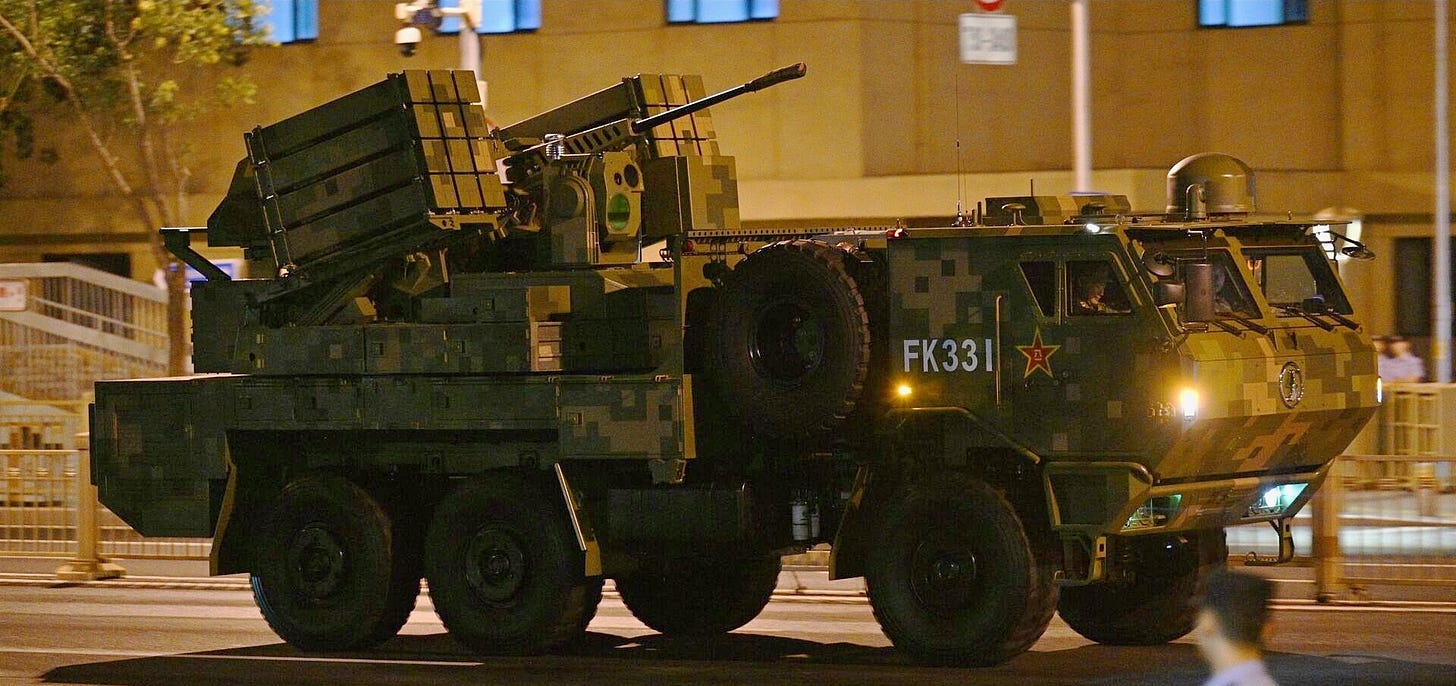New Short-Range Air Defence System Draws Attention To PLA Division of Labour Of Roles And Responsibilities
🇨🇳
Note: The following text was originally posted on my X/Twitter account.
One area of uncertainty concerning this new Chinese combined gun and missile short-range air defence system revolves around whether it—and similar short-range air defence capabilities more generally—will be fielded by the PLA Air Force (PLAAF) or the PLA Ground Force (PLAGF). As things stand, the PLAGF, not the PLAAF, operates the bulk of China's short-range air defence systems, and it remains to be seen how the PLAAF, which is the lead PLA service branch tasked with securing Chinese airspace, will approach the role of short-range air defence against increasing deep adversary strike munition arsenals in times of crisis and war.
While there is a tendency to lump all short-range air defence systems and capabilities together, it is important to recognize that there are very different optimizations toward forward-area air defence roles (i.e., close to the frontlines, often in support of ground combat units) and rear-area air defence roles. The growing threat posed by propeller-driven fixed-wing strike drones and other low-cost munitions more generally has greatly increased the importance of rear-area air defence capabilities and typically requires a very different breed of air defence system relative to those that are well-suited to rear-area air defence against the likes of land-attack cruise missiles. The presence of what is likely to be 30×165 mm single-barreled autocannon and launch canisters containing a large number of very small/light/short-range surface-to-air missiles/interceptors highlights the extent to which this new Chinese air defence system is unlike the many Chinese and non-Chinese air defence systems developed during the Cold War.
Should the PLAAF deploy this new Chinese short-range air defence system, it is likely to complement the HQ-11, which is a combined gun and missile short-range air defence system (the gun and missiles are carried by separate vehicles in the case of the HQ-11). Should the PLAGF deploy this new Chinese short-range air defence system, it is likely to complement a variety of PLAGF-exclusive air defence systems in PLAGF air defence brigades—which are part of the PLAGF's corps-sized group armies—and/or the PLAGF's air defence battalions—which are subordinate to the combined arms brigades that fall under the PLAGF's group armies.
One of the inherent limitations of short-range air defence systems is that these can only protect a very small surface area. As a result, such systems are required in very large numbers. In China's case and in a context in which the PLA is likely to face tens of thousands of adversary strike munitions—primarily lower-end strike munitions—the PLA is likely to require hundreds—if not thousands—of such air defence systems. Neither the PLA nor the U.S. military have the resources to procure such a relatively exquisite short-range air defence in such numbers without cutting back on/forgoing other procurement priorities. As a result, the PLAAF and the PLAGF are likely to heavily rely on far less sophisticated, less expensive, and more plentiful short-range air defence systems for the foreseeable future.


